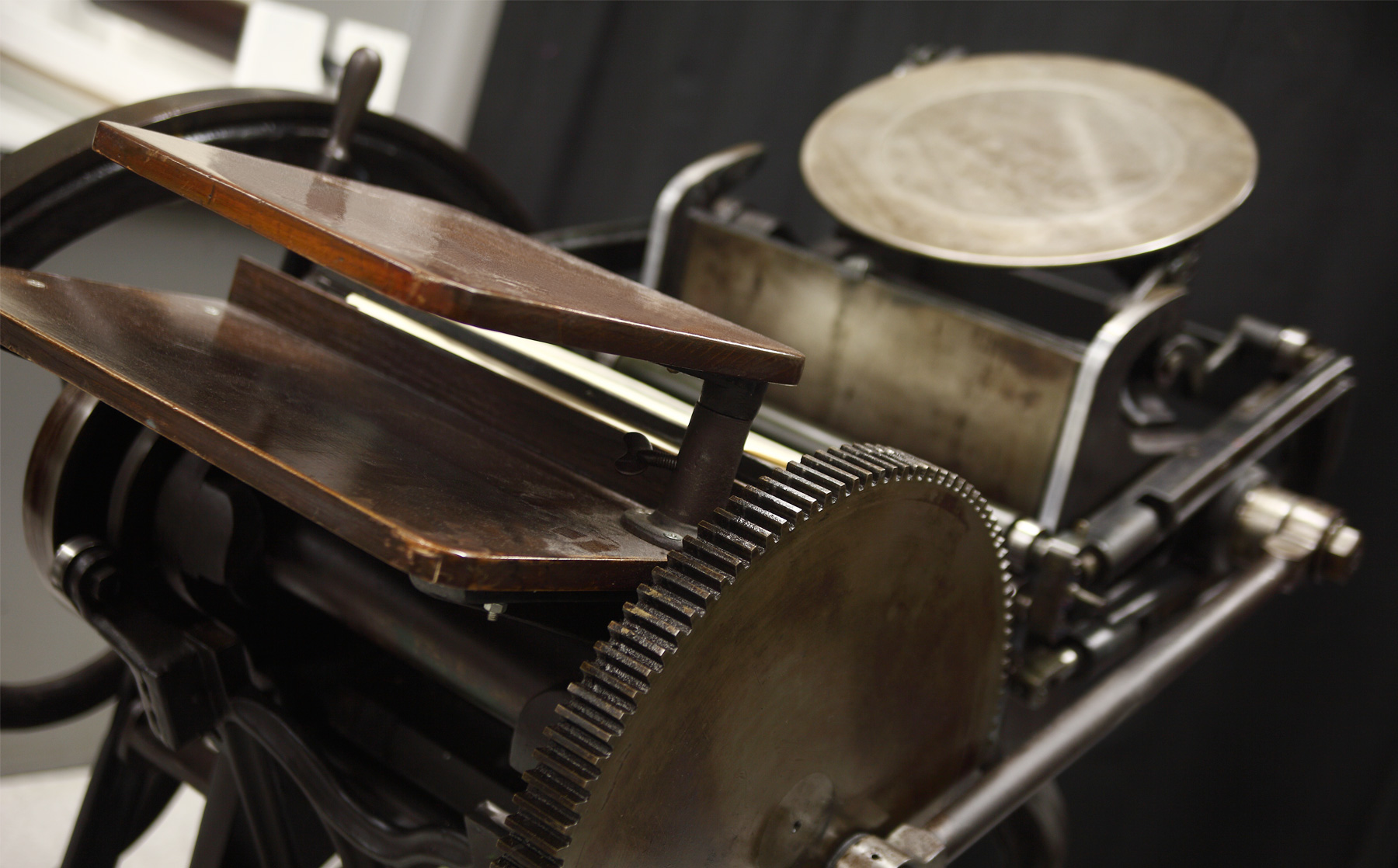
From ancient scrolls to modern billboards, print has been an influential force in our society. Let’s take a look at the history of print, tracing its evolution from early civilization to the modern-day.
Printing Before The Press
Thought to be the earliest form of typography, Cuneiform originated around 3100 BCE in Sumer, or modern-day Iraq. Cuneiform is characterized by wedge-like impressions marked on clay tablets with blunt reeds. While this is not a form of printing directly, this key advancement paved the way for the evolution of writing systems, which would lead to the modern printing technology we have today.
Xylography/ Woodblock Printing
Woodblock printing, or xylography, is believed to have originated in China around 200 CE, and was the first method of printing applied to a paper-like surface. Preceded by stenciling and ancient forms of stamps, woodblock printing was a huge milestone for printing advancement. This process involved carving characters and images onto wooden blocks, inking the blocks, and then transferring the ink onto fabrics and papers, applying pressure to create the image. Though this system was created around 200 CE, it wouldn’t become a well known practice in Europe for another 1,000 years.
The Printing Press
In 1440, Johann Gutenberg developed the most impactful technological advancement that the world had seen yet: the printing press, and singlehandedly set the Printing Revolution in motion. In Gutenberg’s press, movable type was arranged over a wooden plate and coated in ink, with a sheet of paper laid on top. The two plates pressed the paper and type together, creating sharp images on the paper (Britannica). The impact of the printing press on society was massive. The availability of printed materials helped to standardize languages, promote literacy, and foster cultural exchange. It empowered individuals to challenge established authority and promote new ways of thinking, leading to social, political, and intellectual upheavals that transformed the course of history.
In the centuries that followed Gutenberg’s invention, printing technology continued to evolve. Innovations such as lithography, offset printing, and digital printing further expanded the capabilities and possibilities of print, making it more accessible, versatile, and efficient than ever before.
Lithographic Printing
Discovered in the late 18th century by German actor Alois Senefelder, lithography was a major milestone in the development of printing technology. In 1796, Senefelder discovered that grease and water could be used to create a printed image on a limestone surface. After the image was drawn on the surface with a greasy material, the surface would be treated with a chemical solution that fixed the image in place, and then dampened with water which would be repelled by the greasy areas. Ink would then be applied, adhering only to certain image areas, and then transferred onto a sheet of paper.
Offset Printing
Building upon the principles of lithography, offset printing emerged in the early 20th century as a more efficient method of producing large format prints. In offset printing, the image is transferred from a plate onto a rubber blanket before being applied to the printing surface. This indirect printing process allows for faster printing speeds and the ability to produce large quantities of prints consistently.
Digital Printing Technology
The advent of digital printing technology in the late 20th century marked a significant milestone in the evolution of large format printing. Digital printing eliminates the need for traditional printing plates, allowing for greater flexibility, customization, and cost-effectiveness. With the development of large format digital printers, such as inkjet and solvent printers, printing on a variety of substrates in sizes ranging from posters to billboards became more accessible and efficient.
UV and Large Format Printing
UV printing technology, which emerged in the early 21st century, introduced new possibilities for large format printing. UV printing uses ultraviolet light to instantly cure or dry ink as it is applied to the printing surface, resulting in durable prints with vibrant colors and crisp details. This method allows for printing on a wide range of substrates, including rigid materials like glass, metal, and acrylic, expanding the applications of large format printing beyond traditional paper-based media.
With advancements in printing technology, such as eco-solvent printing, and dye sublimation, large format prints are now more versatile, durable, and environmentally friendly than ever before. These technologies allow for the printing of high-resolution images on a wide range of substrates, including vinyl, fabric, paper, and rigid materials. Today, large format printing continues to play a vital role in advertising, marketing, branding, and beyond.
As we look back on the history of printing and the evolution of large format printing technology, it’s clear that the future holds even greater possibilities. With ongoing advancements in printing technology, the potential for large format printing to inspire, inform, and engage audiences is limitless.
Have a print project coming up? Check out our guide to achieving the perfect print, and contact our sales team at XL Digital Imaging today!
(214) 904 – 9400
